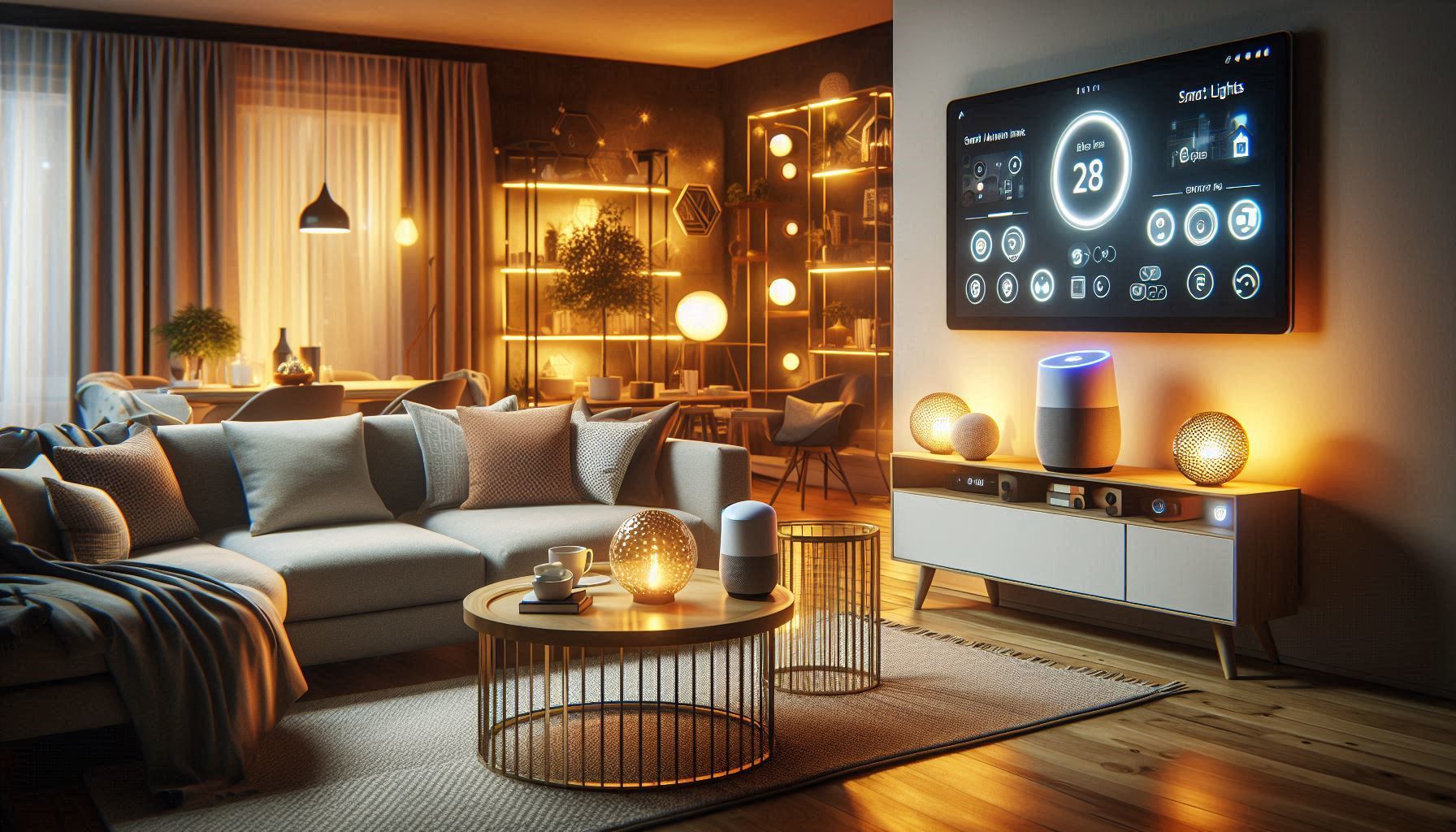- Introduction
- Overview of Home Automation
- Importance of Keeping Up with Trends
- What is Home Automation?
- Definition and Key Features
- Benefits for Homeowners
- Current State of Home Automation
- Market Overview
- Popular Devices and Technologies
- Trend 1: Increased integration of AI
- AI in Smart Devices
- Personalization and Predictive Analytics
- Trend 2: Enhanced Security Features
- Smart Locks and Surveillance
- Integration with Local Law Enforcement
- Trend 3: Energy Efficiency and Sustainability
- Smart Thermostats and Energy Management
- Solar Integration
- Trend 4: Voice Control and Virtual Assistants
- Popular Voice Assistants
- Voice Control in Daily Life
- Trend 5: Interoperability Between Devices
- Importance of Compatibility
- Emerging Standards and Protocols
- Trend 6: Home Automation and Aging in Place
- Technology for Seniors
- Health Monitoring Solutions
- Trend 7: Smart Furniture and IoT Integration
- Innovations in Smart Furniture
- IoT’s Role in Home Design
- Future Considerations for Home Automation
- Privacy and Data Security
- The Role of 5G
- Challenges Facing Home Automation
- Cost and Accessibility
- User Education and Adoption
- Conclusion
- Recap of Key Trends
- The Future is Bright for Home Automation
- FAQs
- What is the most popular home automation device?
- How can home automation save money?
- Are smart homes safe?
- What are the privacy concerns with smart devices?
- How does home automation impact home value?
The Future of Home Automation: Trends to Watch
Introduction
Home automation is no longer just a sci-fi fantasy; it’s becoming a staple in modern living. If you’ve ever wondered how to make your home smarter, safer, and more efficient, you’re not alone. Staying updated on the latest trends in home automation can help you make informed decisions about your living space. So, what’s next for this fascinating field? Let’s dive in!
What is Home Automation?
Home automation refers to the control of home appliances through the internet, allowing you to manage your home remotely. Imagine adjusting your thermostat, checking your security cameras, or even starting your coffee maker—all from your smartphone. The benefits are immense: enhanced comfort , improved security, and energy efficiency, just to name a few.
Current State of Home Automation
The home automation market is booming, with millions of devices now available. From smart speakers to security systems, there’s something for everyone. Companies like Google, Amazon, and Apple are leading the charge, making it easier for you to incorporate smart technology into your life.
Trend 1: Increased integration of AI
Artificial Intelligence (AI) is the brain behind many smart devices today. As AI technology advances, we can expect even more personalization and predictive analytics. Imagine a system that learns your routines and adjusts your home environment accordingly—turning on lights as you arrive home or suggesting energy-saving settings based on your habits. The future of home automation will feel almost tailor-made for you.
Trend 2: Enhanced Security Features
With more devices connected to the internet, security is paramount. Smart locks, cameras, and alarm systems are now more sophisticated than ever. They offer features like facial recognition and alerts sent directly to your phone. Some even integrate with local law enforcement, providing real-time updates if something suspicious is detected. Your home will not only be smarter but also safer.
Trend 3: Energy Efficiency and Sustainability
As we become more environmentally conscious, energy efficiency is at the forefront of home automation. Smart thermostats can optimize heating and cooling based on your schedule, while smart plugs can monitor and reduce energy usage. Plus, with the rise of solar technology, many homes will integrate renewable energy sources, allowing for sustainable living.
Trend 4: Voice Control and Virtual Assistants
Voice control is changing the way we interact with our homes. Popular virtual assistants like Amazon Alexa and Google Assistant are now household names. These technologies allow you to control everything from music to lighting with just your voice. Picture this: you walk into your home , and with a simple command, the lights dim, your favorite playlist starts, and the temperature adjusts to your liking. It’s convenience at its best!
Trend 5: Interoperability Between Devices
As more devices hit the market, interoperability is becoming increasingly crucial. Homeowners want their devices to communicate seamlessly, regardless of brand. Emerging standards and protocols, like Matter, aim to bridge this gap, ensuring that your smart home can work together harmoniously. dream of a fully integrated home is closer than ever!
Trend 6: Home Automation and Aging in Place
Home automation isn’t just for tech enthusiasts; it’s also a game-changer for seniors. Smart devices can assist in aging in place, providing solutions like health monitoring, emergency alerts, and even medication reminders. Imagine an elderly family member being able to live independently while having their health monitored through smart technology—what a relief for both them and their families!
Trend 7: Smart Furniture and IoT Integration
Furniture is getting a tech makeover! From beds that monitor your sleep to couches with built-in speakers, smart furniture is on the rise. The Internet of Things (IoT) is driving this innovation, integrating everyday items into the smart home ecosystem. Your living room could soon become an interactive space that adapts to your lifestyle.
Future Considerations for Home Automation
As we look ahead, several factors will shape the future of home automation. Privacy and data security will remain hot topics, especially as more devices collect personal information. Additionally, the rollout of 5G technology will enhance connectivity and speed, making smart homes even smarter .
Challenges Facing Home Automation
Despite its advantages, home automation does face challenges. The initial cost of smart devices can be prohibitive for many, and not everyone is tech-savvy. Education and user support will be key in overcoming these hurdles. After all, a smart home is only as good as its user!
Conclusion
The future of home automation is bright and full of exciting trends that promise to enhance our living spaces. From AI integration to smart furniture, the advancements we’re seeing are just the tip of the iceberg. Whether you’re looking to improve your home’s security, energy efficiency, or overall convenience, the possibilities are endless. So, are you ready to embrace the smart home revolution?
FAQs
What is the most popular home automation device? Smart speakers, like Amazon Echo and Google Nest, are among the most popular home automation devices.
How can home automation save money? By optimizing energy usage and enhancing security, home automation can significantly reduce utility bills and prevent costly emergencies.
Are smart homes safe? While they offer enhanced security features, smart homes also come with risks. Regular updates and strong passwords are essential for maintaining safety.
What are the privacy concerns with smart devices? Many smart devices collect data to personalize user experience, raising concerns about data security and privacy breaches.
How does home automation impact home value? A well-implemented home automation system can increase property value and appeal to potential buyers looking for modern conveniences.


